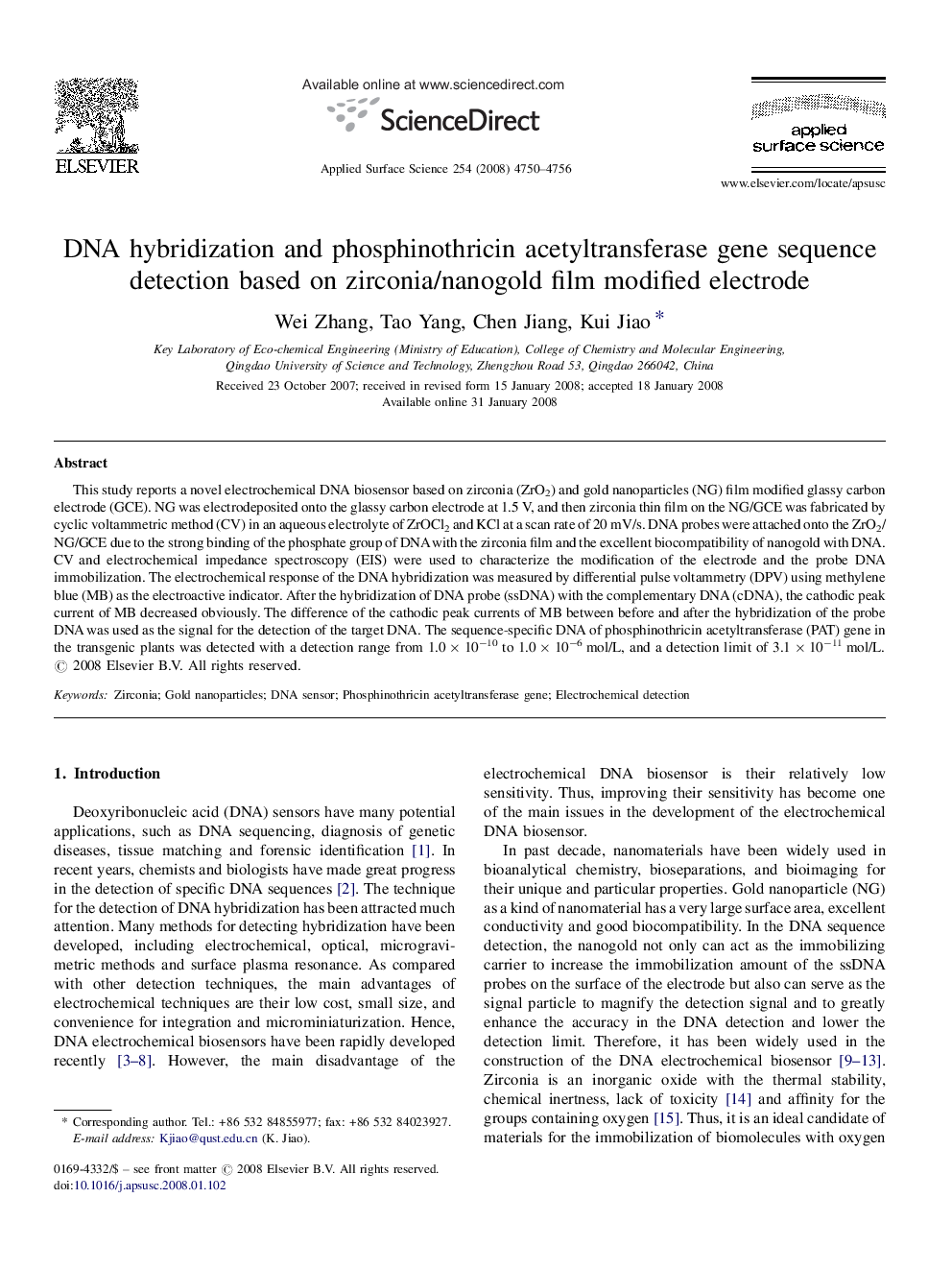| کد مقاله | کد نشریه | سال انتشار | مقاله انگلیسی | نسخه تمام متن |
|---|---|---|---|---|
| 5363939 | 1388308 | 2008 | 7 صفحه PDF | دانلود رایگان |

This study reports a novel electrochemical DNA biosensor based on zirconia (ZrO2) and gold nanoparticles (NG) film modified glassy carbon electrode (GCE). NG was electrodeposited onto the glassy carbon electrode at 1.5Â V, and then zirconia thin film on the NG/GCE was fabricated by cyclic voltammetric method (CV) in an aqueous electrolyte of ZrOCl2 and KCl at a scan rate of 20Â mV/s. DNA probes were attached onto the ZrO2/NG/GCE due to the strong binding of the phosphate group of DNA with the zirconia film and the excellent biocompatibility of nanogold with DNA. CV and electrochemical impedance spectroscopy (EIS) were used to characterize the modification of the electrode and the probe DNA immobilization. The electrochemical response of the DNA hybridization was measured by differential pulse voltammetry (DPV) using methylene blue (MB) as the electroactive indicator. After the hybridization of DNA probe (ssDNA) with the complementary DNA (cDNA), the cathodic peak current of MB decreased obviously. The difference of the cathodic peak currents of MB between before and after the hybridization of the probe DNA was used as the signal for the detection of the target DNA. The sequence-specific DNA of phosphinothricin acetyltransferase (PAT) gene in the transgenic plants was detected with a detection range from 1.0Â ÃÂ 10â10 to 1.0Â ÃÂ 10â6Â mol/L, and a detection limit of 3.1Â ÃÂ 10â11Â mol/L.
Journal: Applied Surface Science - Volume 254, Issue 15, 30 May 2008, Pages 4750-4756